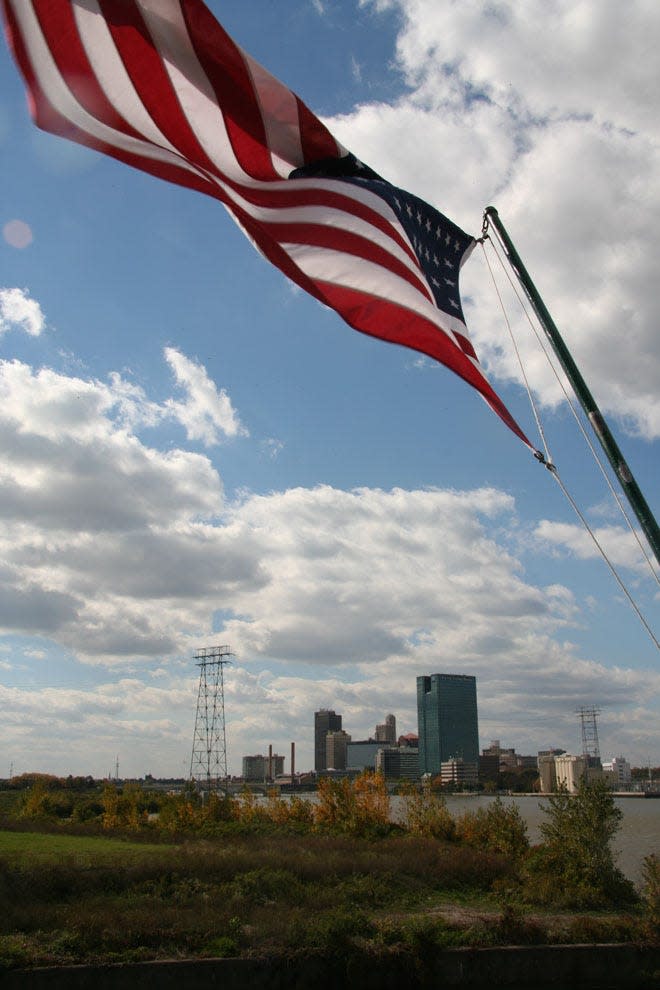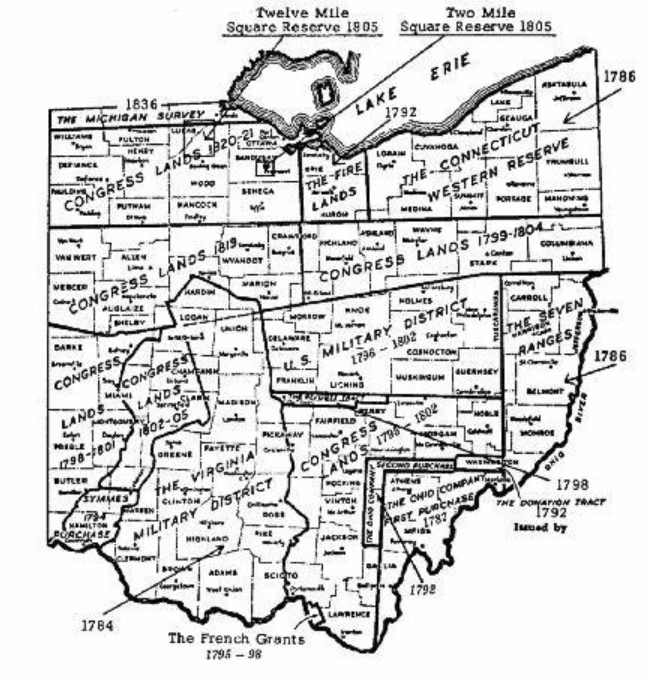When did the Ohio State and Michigan rivalry start? Historians trace it back to a 'war'

The first time Ohio and Michigan nearly came to blows wasn't on the gridiron, as it turns out, but on a battlefield.
One of the most heated rivalries in college football dates back to the 1800s, when parts of the country now known as the Midwest were being carved up for statehood.
Like many states, Ohio's outline was largely determined by pre-existing borders and natural ones, such as the state of Pennsylvania to the east, the Ohio River to the south and river intersections to the west. But it was a disagreement over Ohio's northwest border with what was then the Michigan Territory that nearly started a war.
Read More: New Ohio State president Q&A: He almost didn't take the job, Intel, the Wexners and more
The so-called "Toledo War" was a border dispute between Ohio and the Michigan Territory that led to tensions between the neighboring regions for more than 30 years, according to the Ohio History Connection. The conflict ultimately led to the Ohio and Michigan borders that still exist today.
Here's what we know about the war that wasn't over Toledo and the dispute that's percolated for 220 years now:
What started the 'Toledo War?'
The Toledo War came about when Michigan was preparing to apply for statehood.
The dispute was over whether a 450-square-mile portion of land then known as the Toledo strip belonged to Ohio or Michigan.
The Northwest Ordinance of 1787 stated Ohio's northern boundary was an east to west line drawn through the southern bend of Lake Michigan, according to the Ohio History Connection. Congress used the same language to declare Ohio's border when it established the Michigan Territory in 1805.
For shipping reasons, the line was intended to include the Maumee River and portions of the Maumee Bay. But the lack of modern technology made it difficult to know for sure. The assumed dividing line turned out to be incorrect, as a fur trapper told delegates of the Ohio Constitutional Convention in 1802 that it didn't include the river.
In 1803, delegates stipulated in Ohio's constitution that the state's borders included the Maumee River, according to the Ohio History Connection. Congress accepted that constitution, but federal legislators never acted on its boundary provision.
Many early settlers of the Toledo area actually held property deeds that stated the region was part of Monroe County, Michigan, said Tedd Long, chief storyteller for the website Holy Toledo History.
Living in the Michigan Territory rather than the state of Ohio offered tax benefits, which Long said many residents decided to take advantage of at the time.

How did the 'war' play out over the years?
Michigan applied for statehood repeatedly, said Ben Baughman, a curator for the Ohio History Connection. Each time, the application was denied because Michigan refused to give up its claim to the Toledo strip.
Michigan Territory Gov. Stevens Mason suggested forming a commission to negotiate a resolution to the dispute, but Ohio Gov. Robert Lucas refused. In 1835, the Ohio legislature formed Lucas County out of this disputed territory, and the Ohio Common Pleas Court held a session there in an attempt to validate the state's claim to the land.
Both Mason and Lucas ordered their militias to prepare to take the Toledo strip by force if they had to.
"I think it came fairly close. They were definitely preparing for something" Baughman said. "Michigan's territorial governor passed a bunch of laws saying Ohioans were not allowed to come into Toledo, saying they'd be arrested or fined."
Michigan's Mason asked President Andrew Jackson to step in as there were "real concerns about a civil war" breaking out, Long said. Jackson sent two representatives to negotiate a peaceful resolution to the conflict, and both groups sent leaders to a commission to negotiate.
A solution didn't materialize, according to the Ohio History Connection, and Jackson eventually removed Mason as the Michigan Territory's governor and replaced him with John Horner.
How was the 'war' eventually resolved?
After decades of disagreement, the war was finally brought to an end in 1836.
A compromise was reached that allowed Ohio to claim Toledo and the Maumee River and Maumee Bay. In exchange for giving up Toledo, Michigan was given what today is known as its Upper Peninsula.
The agreement, which the president himself signed off on, paved the way for Michigan to become a state in 1837, according to the Ohio History Connection.
At the time, Baughman said, Michiganders felt like they got the short end of the deal. Over time, though, the Upper Peninsula was found to be rich in minerals and is today viewed by Michiganders as an outdoor oasis.
Read More: Ohio State's Ted Carter says he'll be an apolitical president, not a culture warrior
Was anyone ever actually killed?
The short answer is no, but there were close calls and at least one incident of violence.
The militias ordered to the Maumee River never engaged. And though arrest warrants were issued for public officials by both Michigan and Ohio, Long said there was only one incident in which blood was drawn.
At the height of the dispute, a man named Two Stickney stabbed a Michigan deputy sheriff. It was the only act of violence in the entire dispute, both Long and Baughman said.
Does the Ohio State versus Michigan rivalry really harken back to the 'Toledo War?'
Historians believe the longstanding rivalry between the Ohio State University Buckeyes and the University of Michigan Wolverines is, in fact, linked to the Toledo War.
Michigan residents simmered for a long time over what they felt like was a bad deal for them. They went so far as to verbally berate Horner and hung effigies of him, according to Ohio History Connection.
"The Ohio State and Michigan rivalry definitely comes from this," Long said. "I don't think there's any question in my mind about it."
Likely adding to the feud was the fact that the Michigan Territory was considering building the University of Michigan in Toledo rather than Ann Arbor, where it ended up, said Long.
Today, the two cities stand about 54 miles, or nearly one hour, away from each other.
"The University of Michigan was supposed to be built in what is downtown Toledo today," Long said. "People invested and bought a bunch of property there because of those plans. That's how close it was to happening."
mfilby@dispatch.com
@MaxFilby
This article originally appeared on The Columbus Dispatch: Ohio and Michigan almost went to war over Toledo in 1800s border clash

